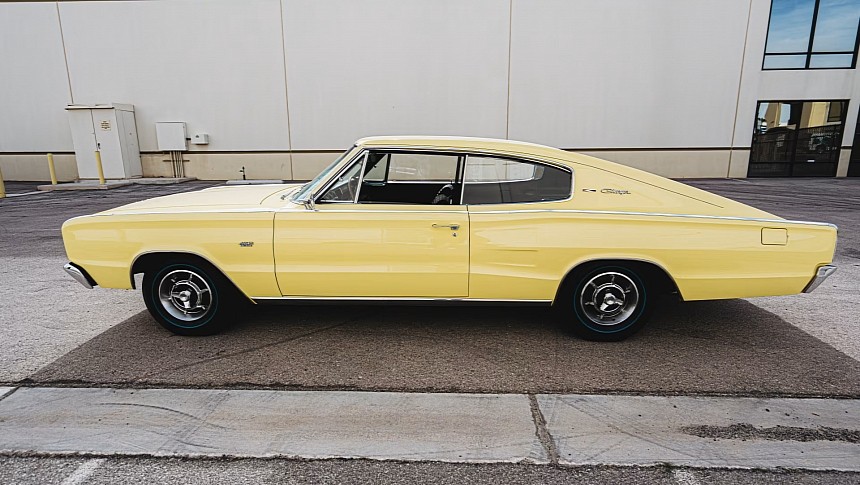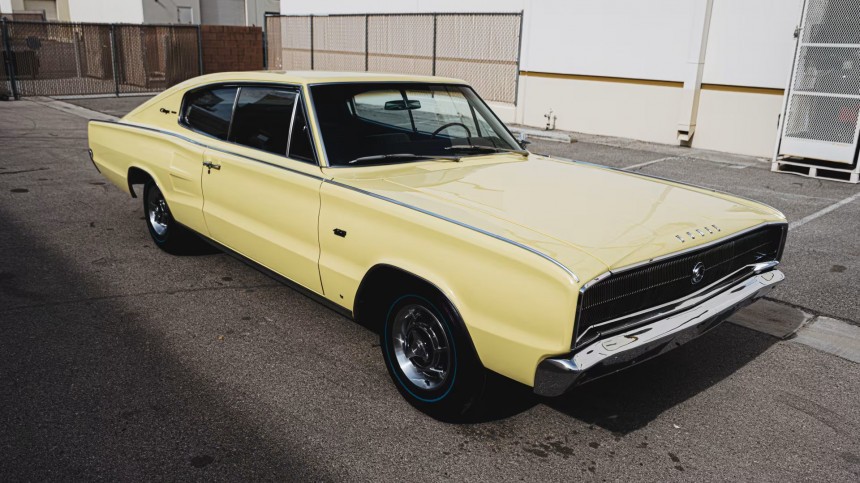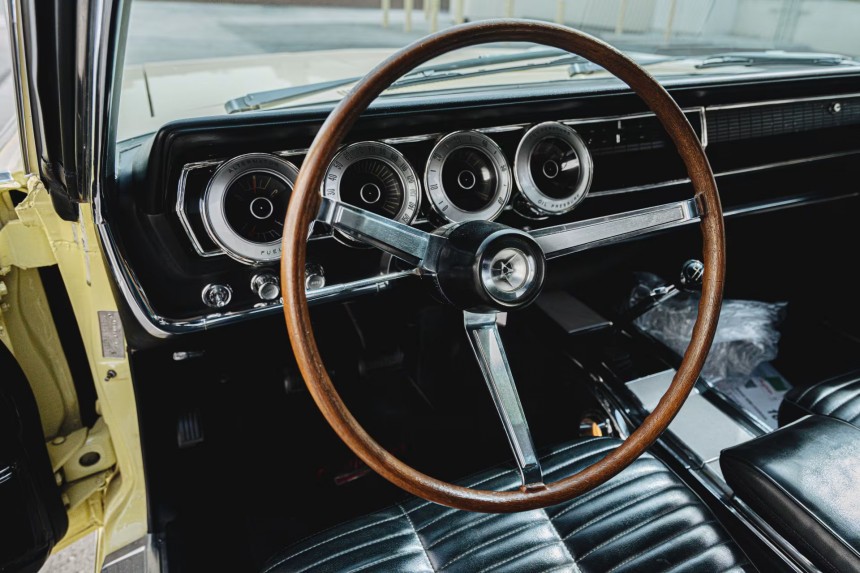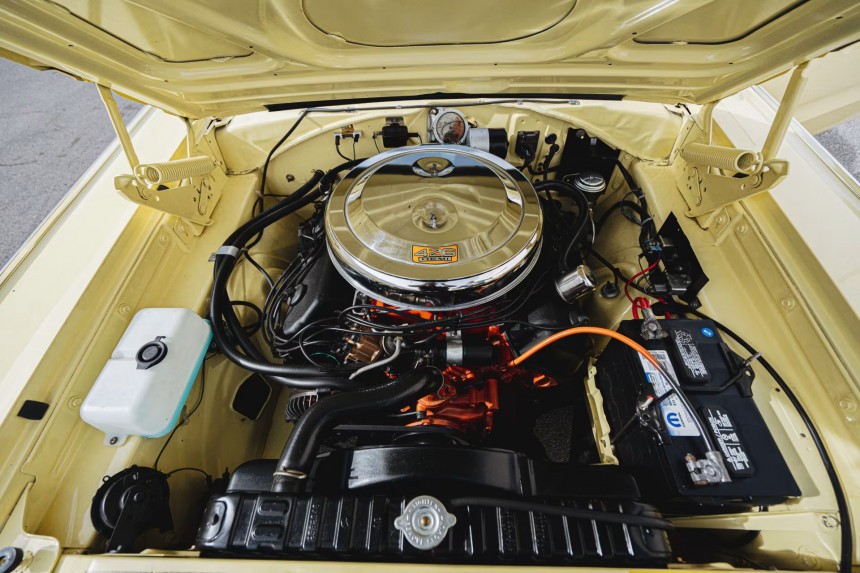It’s hard to think of Dodge without making an almost instinctive word association with either one of the ‘Ch’ legends among the most adulated piston gods in the automobile pantheon. The Charger and the Challenger are two of Mother Mopar’s best-known sons. The great thing about both nameplates is that they’re not (yet?) restricted to the dusty corners of the archives. However, once in a while, a piece of history serves well in reminding everyone where it all started.
Once upon a Ford Mustang debut in 1964, Dodge noticed that the Chrysler-made corresponding automobile of the newly-invented ‘pony car’ segment wasn’t selling well at all. The Barracuda wasn’t the menace Plymouth had hoped it would, and the FoMoCo stallion trampled the aquatic-dwelling namesake car to the bottom of the sales ocean.
Dodge brass thought it would be wise not to repeat the sister division’s mistake and didn’t put a competitor for the Mustang on the A-body platform (like the Barracuda was). Instead, the higher-positioned division in Chrysler’s internal hierarchy opted to go the opposite way. Instead of offering a low-price 2+2 automobile, Dodge put luxury and performance together in the same package.
On January 1, 1966, America received an offer it wouldn’t refuse: the Dodge Charger – launched to herald the most lauded Chrysler engine of all time – the 426 Street HEMI. A year before, Mopars declined to attend the NASCAR party, boycotting the competition in retaliation against having the race HEMI banned.
However, without Sunday wins, there is no Monday sale to write home about, and NASCAR was an excellent opportunity for broadband advertising. So the HEMI hit the streets hand in hand with the Charger – although the fastback automobile was more of an acquired taste than a love-at-first-sight affair. A Coronet with a sloping back, the Charger was vastly different on the inside and, critically, under the skin.
The cabin of a 1966 Charger was a rebellion against boredom, an invitation to consider luxury as a standard, and a nice deviation from the norm of the time. The full-length console stretching from the dashboard to between the rear bucket seats, the instruments cluster with retro-luminescent lighting, and the rear-passenger headroom stood out from the crowd.
The Charger debuted as a V8-only model, with four engine choices: the 318-cube/5.2-liter (which came as the standard offer), and the big-block triad of 361 (5.9-liter), 383 (6.3-liter), and 426 cubic-inch (7.0-liter) eight-pot powerplants. In its most modest form, a Charger would leave the showroom for no less than $3,122. However, adding the fabled motor with hemispherical heads (they weren’t true half-spheres, but the difference is so mathematically small it makes any argument useless) was an $880 requirement.
Perhaps that’s why only 468 first-year Dodge Chargers got the Street HEMI, falling last in the Chrysler order of precedence from this viewpoint. The Coronet was the other Dodge model to carry the big V8, which got an allotment of 740 7.0-liter motors. (Plymouth got the lion’s share, its HEMI Satellite roll call returning an 844-unit headcount, while the Belvedere boasted 702 HEMI-powered examples).
The monster legend's 425-hp, 490 lb-ft /9431 PS, 664 Nm) output was tamed by a three-speed automatic or a four-speed ‘do-the-shifting-yourself’ box. The least preferred of the trio was the four-on-the-console option, at 250 examples. The three-speed manual tranny was not available with the torque ogre, nor did it come with the other two big-blocks.
With fully synchronized forward gears, a short-throw shift pattern, and a positive reverse lockout lever, the four-speed was the thriller, the chiller, and the killer. 0-60 mph times were in the low 6s, standing quarters got covered in around 14 seconds, and the trap speed at the end of those 440 yards was past 100 mph (161 kph). Not bad at all for a car with enough room for four adults and their luggage.
However, the HEMI was a pretentious motor, and Chrysler was fully aware of its pompous nature; hence, it cut the warranty for it to 12 months or 12,000 miles (around 19,000 km), a cataclysmic drop from its industry-leading 5-year/50,000-mile (80,000 km) usual.
Overall, the Charger moved over 37,000 units in its inaugural year – not a great figure, but a good performance for a mid-year launch. The quirky design – closely resembling the Charger II show car of 1965 but strikingly close to the Rambler Marlin’s profile – didn’t catch on, and sales halved the following year. Perhaps the Coronet similarities fended buyers off, but it was enough to end the first-generation Charger.
However, survivors roam the streets and are held in high regard nowadays, 57 years after they dawned on Planet Car. One of the select members of that exclusive 1966 HEMI Charger society is this yellow one you can see in the gallery. The engine and transmission are blood brothers and have adorned the car since day one. The 3.54 Sure-Grip Dana 60 rear completes the rare combo.
The car is going under the hammer next month in Las Vegas, and it would be noteworthy that last January, it changed hands for $110,000. With an odometer dowry 82,760 miles long (133,161 km), this first-year Charger is not among the coveted unrestored originals because it has been refurbished at some point. Still, it does honor its name and history with impeccable looks and exclusivity.
Dodge brass thought it would be wise not to repeat the sister division’s mistake and didn’t put a competitor for the Mustang on the A-body platform (like the Barracuda was). Instead, the higher-positioned division in Chrysler’s internal hierarchy opted to go the opposite way. Instead of offering a low-price 2+2 automobile, Dodge put luxury and performance together in the same package.
On January 1, 1966, America received an offer it wouldn’t refuse: the Dodge Charger – launched to herald the most lauded Chrysler engine of all time – the 426 Street HEMI. A year before, Mopars declined to attend the NASCAR party, boycotting the competition in retaliation against having the race HEMI banned.
The cabin of a 1966 Charger was a rebellion against boredom, an invitation to consider luxury as a standard, and a nice deviation from the norm of the time. The full-length console stretching from the dashboard to between the rear bucket seats, the instruments cluster with retro-luminescent lighting, and the rear-passenger headroom stood out from the crowd.
The Charger debuted as a V8-only model, with four engine choices: the 318-cube/5.2-liter (which came as the standard offer), and the big-block triad of 361 (5.9-liter), 383 (6.3-liter), and 426 cubic-inch (7.0-liter) eight-pot powerplants. In its most modest form, a Charger would leave the showroom for no less than $3,122. However, adding the fabled motor with hemispherical heads (they weren’t true half-spheres, but the difference is so mathematically small it makes any argument useless) was an $880 requirement.
The monster legend's 425-hp, 490 lb-ft /9431 PS, 664 Nm) output was tamed by a three-speed automatic or a four-speed ‘do-the-shifting-yourself’ box. The least preferred of the trio was the four-on-the-console option, at 250 examples. The three-speed manual tranny was not available with the torque ogre, nor did it come with the other two big-blocks.
With fully synchronized forward gears, a short-throw shift pattern, and a positive reverse lockout lever, the four-speed was the thriller, the chiller, and the killer. 0-60 mph times were in the low 6s, standing quarters got covered in around 14 seconds, and the trap speed at the end of those 440 yards was past 100 mph (161 kph). Not bad at all for a car with enough room for four adults and their luggage.
Overall, the Charger moved over 37,000 units in its inaugural year – not a great figure, but a good performance for a mid-year launch. The quirky design – closely resembling the Charger II show car of 1965 but strikingly close to the Rambler Marlin’s profile – didn’t catch on, and sales halved the following year. Perhaps the Coronet similarities fended buyers off, but it was enough to end the first-generation Charger.
However, survivors roam the streets and are held in high regard nowadays, 57 years after they dawned on Planet Car. One of the select members of that exclusive 1966 HEMI Charger society is this yellow one you can see in the gallery. The engine and transmission are blood brothers and have adorned the car since day one. The 3.54 Sure-Grip Dana 60 rear completes the rare combo.
The car is going under the hammer next month in Las Vegas, and it would be noteworthy that last January, it changed hands for $110,000. With an odometer dowry 82,760 miles long (133,161 km), this first-year Charger is not among the coveted unrestored originals because it has been refurbished at some point. Still, it does honor its name and history with impeccable looks and exclusivity.











